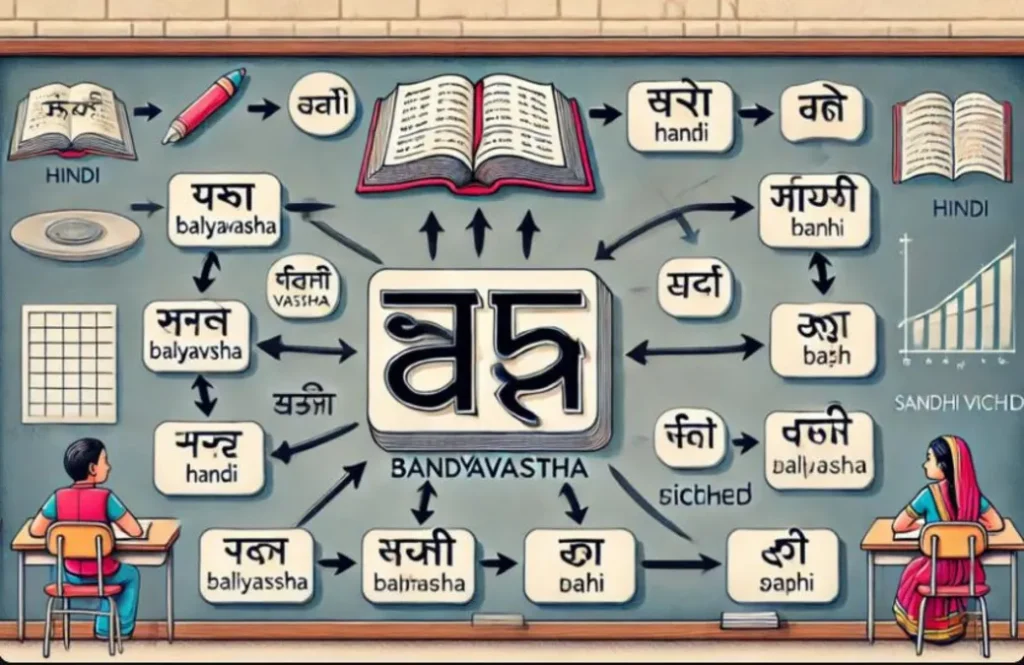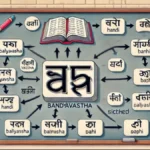Table of Contents
Ever wondered how words transform in Sanskrit? That’s where Sandhi comes into play. Sandhi is a fascinating aspect of Sanskrit grammar, acting as the bridge between words and sounds. It helps us understand how different elements come together to form cohesive and meaningful expressions. So, let’s dive into the world of Sandhi and uncover the mysteries of the word “Pavak.“
Understanding Pavak
Etymology and Meaning of Pavak
“Pavak” is a Sanskrit term often encountered in ancient texts. It means “fire” or “purifier.” The word holds significant connotations, symbolizing purity and transformation, much like fire itself.
Contextual Usage in Sanskrit Literature
Pavak is commonly found in Vedic scriptures, epics like the Mahabharata and Ramayana, and numerous other texts. It’s used to represent the cleansing nature of fire, both literally and metaphorically.
Types of Sandhi
Vowel Sandhi
Vowel Sandhi occurs when two vowels come into contact, leading to a modification of sounds. It’s a common Sandhi in Sanskrit due to the language’s vowel-heavy nature.
Consonant Sandhi
Consonant Sandhi involves the transformation that occurs when consonants meet. These changes often result in smoother pronunciation and fluid speech.
Visarga Sandhi
Visarga Sandhi deals with the transformation of the Visarga (ः) character, which usually appears at the end of a word. It can lead to various sound changes depending on the following character.
Identification of Sandhi in Pavak
Breaking Down the Word: Pavak
To identify the Sandhi in “Pavak,” we first need to break it down. Understanding its components helps us see how they interact and transform.
Identifying the Sandhi Type
“Pavak” involves specific rules of Sandhi, but which type exactly? Let’s explore this by delving into the details of its formation and the rules governing its structure.
Vowel Sandhi in Pavak
Rules and Examples of Vowel Sandhi
Vowel Sandhi can lead to various transformations. For instance, if a word ending in “a” is followed by another vowel, the sounds might merge or change. Common examples include the combination of “a” + “i” to form “e.”
Application of Vowel Sandhi in Pavak
In the case of “Pavak,” we might not see a direct vowel Sandhi, but understanding these rules helps us recognize potential transformations if “Pavak” were to combine with other words.
Consonant Sandhi in Pavak
Rules and Examples of Consonant Sandhi
Consonant Sandhi involves changes like the doubling of consonants or their modification for smoother pronunciation. For example, “d” followed by “h” can be changed to “ddh.”
Application of Consonant Sandhi in Pavak
“Pavak” primarily ends with a consonant, so identifying any preceding or following consonant transformations is key. However, the standalone word might not exhibit these changes unless combined with others.
Visarga Sandhi in Pavak
Rules and Examples of Visarga Sandhi
Visarga Sandhi can transform the “ः” sound in various ways. For instance, “ः” followed by “k” might change to “kh.”
Application of Visarga Sandhi in Pavak
Although “Pavak” does not end with a Visarga, understanding this Sandhi helps us if “Pavak” is part of a larger phrase where these rules might apply.
Grammatical Analysis
Detailed Breakdown of Pavak
To fully grasp the Sandhi in “Pavak,” we need a detailed grammatical analysis. This involves looking at its root, suffix, and any potential transformations it undergoes.
Step-by-Step Sandhi Identification Process
- Identify the root word.
- Determine any suffixes or prefixes.
- Analyze potential Sandhi rules that apply.
- Confirm the final form based on these rules.
Cultural and Literary Significance
Role of Pavak in Sanskrit Texts
“Pavak” appears in many revered texts, symbolizing purification and transformation. Its presence underscores the importance of fire in rituals and metaphors.
Symbolic Meanings and Interpretations
Beyond its literal meaning, “Pavak” symbolizes inner purity, spiritual cleansing, and transformative power, making it a profound term in philosophical and religious contexts.
Common Mistakes in Sandhi Identification
Typical Errors in Recognizing Sandhi in Words like Pavak
Misidentifying Sandhi rules can lead to incorrect interpretations. Common mistakes include ignoring vowel transformations or misapplying consonant changes.
Tips to Avoid These Mistakes
- Thoroughly understand each Sandhi type.
- Practice with multiple examples.
- Double-check transformations with reliable sources.
Practical Exercises
Practice Sentences for Identifying Sandhi in Pavak
- “Pavak agni” (fire and fire) – Identify the Sandhi.
- “Pavak anala” (fire and flame) – Determine the transformations.
Solutions and Explanations
- “Pavak agni” – No direct Sandhi change, but practice recognizing potential vowel transformations.
- “Pavak anala” – Similar analysis, focusing on vowel and consonant rules.
Advanced Sandhi Concepts
Complex Sandhi Combinations Involving Pavak
Advanced Sandhi can involve multiple transformations. For example, combining “Pavak” with a word starting with a consonant might involve intricate changes.
Comparative Analysis with Other Words
Comparing “Pavak” with similar words helps in understanding how different Sandhi rules apply across different contexts.
Teaching Sandhi through Pavak
Educational Approaches to Explain Sandhi Using Pavak
Using “Pavak” in educational settings can simplify the concept of Sandhi. Interactive lessons and practical examples make learning engaging.
Lesson Plan Example
- Introduction to Sandhi using “Pavak.”
- Break down and analyze the word.
- Practice with similar examples.
- Group discussion and Q&A.
Conclusion
Understanding Sandhi, particularly in words like “Pavak,” opens up a deeper appreciation of Sanskrit’s linguistic beauty. These transformations are not just grammatical but also carry profound cultural and symbolic meanings. By mastering Sandhi, we gain insight into the elegant complexities of Sanskrit and its rich literary heritage.
Read Also:-AGING EYE CREAM
Frequently Asked Questions about Sandhi and Pavak
Common Queries and Clarifications
-
What is Sandhi in Sanskrit?
Sandhi refers to the rules of sound combination in Sanskrit grammar.
-
What does Pavak mean?
What is Sandhi in Sanskrit?
Sandhi refers to the rules of sound combination in Sanskrit grammar. -
Which type of Sandhi is involved in Pavak?
Pavak can involve vowel, consonant, or visarga Sandhi depending on context.
-
How do you identify Sandhi in words like Pavak?
By analyzing the word structure and applying relevant Sandhi rules.
-
Why is understanding Sandhi important?
It aids in accurate pronunciation, interpretation, and understanding of Sanskrit texts.






